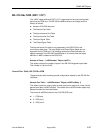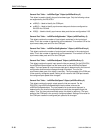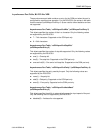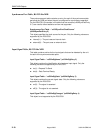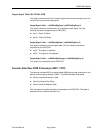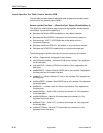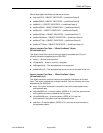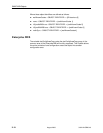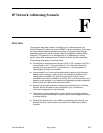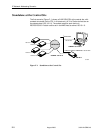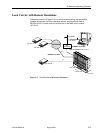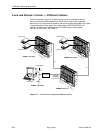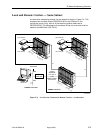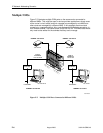
F-1
3162-A2-GB20-40
August 2000
IP Network Addressing Scenario
F
Overview
This appendix describes a means of configuring 31xx Series devices in an
Internet Protocol (IP) network to provide SNMP or Telnet connectivity. Since there
are many possible network addressing schemes, this appendix describes an
addressing scheme for typical customer network management system (NMS)
scenarios. This appendix is not intended to be an IP addressing or routing
tutorial, and a basic understanding of IP and 31xx Series devices is assumed.
The following notes apply to these scenarios:
H Connections to remote devices may be via EDL or FDL; however, the FDL is
only available on full T1 links (not fractional T1s). Check with the service
provider to be sure that the FDL is end-to-end (i.e., not terminated at an
intermediate point within the network).
H Interconnected 31xx Series devices automatically pass routing information
between them; however, a static route to the subnet(s) must be set in the
routing table of the NMS host. This route uses the 31xx Series device
connected to the LAN or the NMS (via a direct PPP or SLIP connection) as a
gateway to the subnet(s). In all instances, the addressing scheme presented
works for both the LAN and the direct connections.
H Although routing table entries are maintained automatically by 31xx Series
devices, without the need for user configuration, only a maximum of
100 routes is supported for a given device.
H The choice of a host address within a given subnet is completely arbitrary.
Choose any legal host address for a given subnet, without regard to the local
or remote devices.
H Although the default route (to the NMS) is configurable for all devices, only
devices that have a direct external connection to an NMS need a default
route set.



